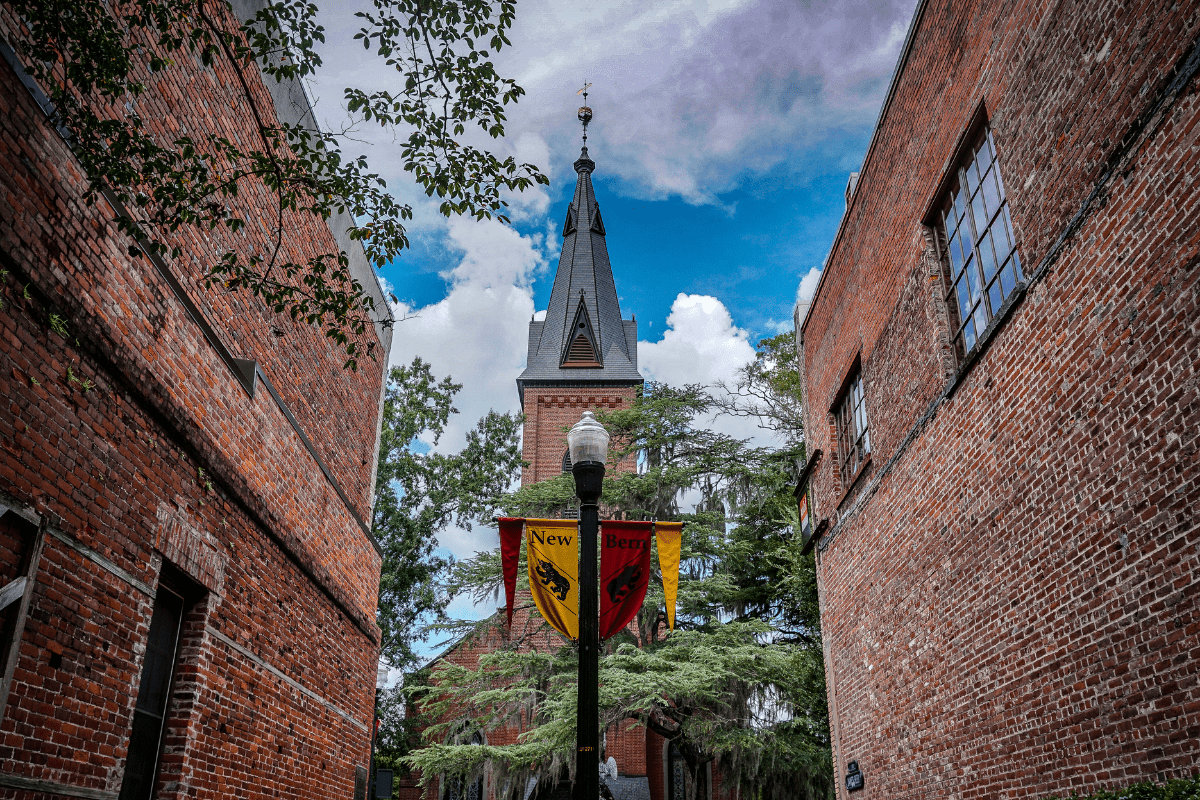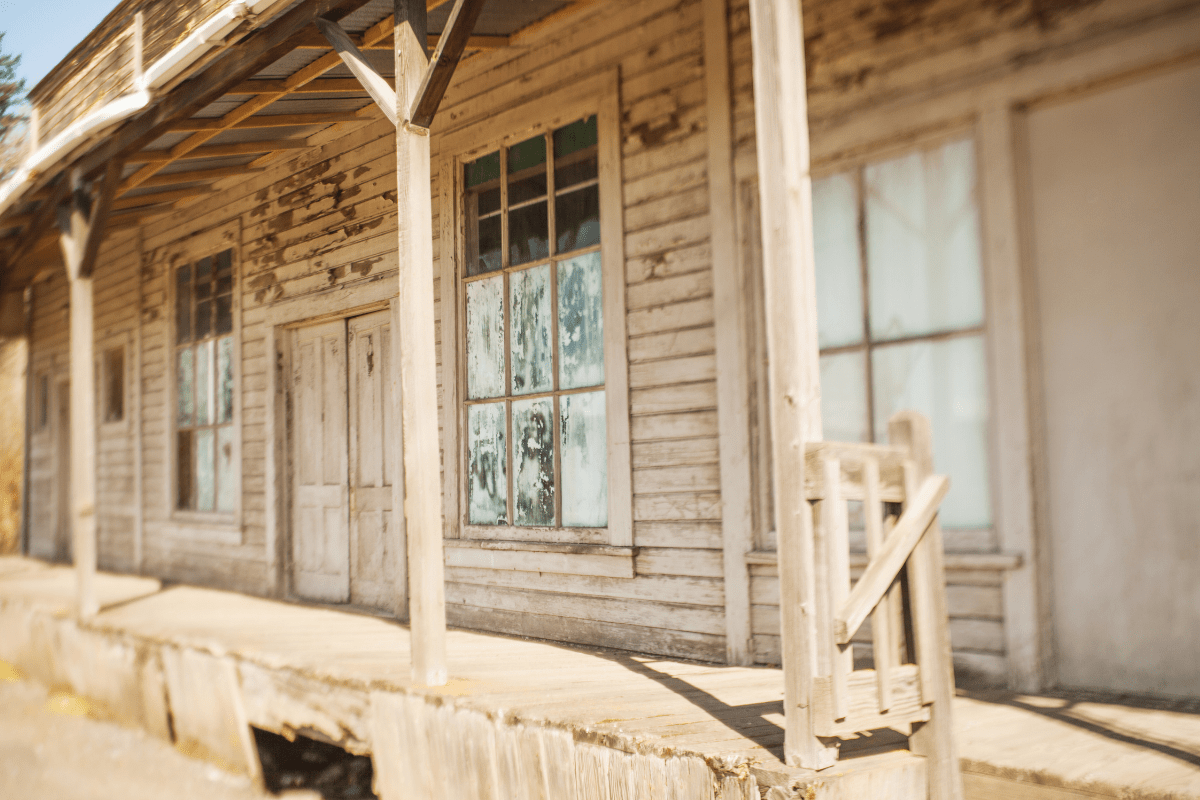Let's be honest… finding great fishing spots in North Carolina is like trying to pick your favorite pizza topping when you love them all. From the wild surf of the Outer Banks to the peaceful mountain streams of the Blue Ridge, this state offers more fishing variety than a tackle shop clearance sale. Whether you're chasing trophy red drum in the salt or stalking native brook trout in crystal-clear mountain water, North Carolina delivers year-round action that'll make your fishing buddies jealous.
Coastal Waters: Where the Big Fish Play
The North Carolina coast stretches over 300 miles, and every inch seems designed to make anglers happy. The magic happens where the warm Gulf Stream collides with the cold Labrador Current, creating a marine buffet that attracts everything from tiny baitfish to massive billfish.
Oregon Inlet: Your Gateway to Offshore Glory
Oregon Inlet serves as the main artery to some of the Atlantic's most productive fishing grounds. Located at coordinates 35°34'30"N, 75°31'00"W, this spot offers something special… the AR-160 reef complex featuring two sunken Liberty ships sitting pretty at 66 feet deep. These underwater apartment buildings host king mackerel, cobia, and amberjack like they're paying rent.
Spring brings the cobia parade from April through May, with fish regularly exceeding 50 pounds. The Oregon Inlet Fishing Center provides everything you need: boat ramps, charter services, and enough parking to handle the weekend warrior crowd. Pro tip: book your charter early during cobia season, or you'll be watching everyone else's Instagram posts from shore.
Cape Hatteras Point: Red Drum Central
If red drum had a hometown, it would be Cape Hatteras Point. This easternmost spot creates what scientists call "nutrient-rich upwellings" at Diamond Shoals… what fishermen call "fish magnets." The point sits at 35°13'32"N, 75°31'32"W, where you can drive your 4WD right onto the beach with a $120 annual permit.
The red drum action peaks from September through November, with citation-sized fish over 40 inches making regular appearances. Just remember the current slot limit: 18-27 inches with one fish per person daily. Spring and summer bring Spanish mackerel, bluefish, and pompano within casting distance. Metal lures and fresh bait work wonders, though watching a pompano hit your sand flea rig never gets old.
Crystal Coast: Where Tournaments Are Won
The Crystal Coast region centers around Beaufort Inlet, your launching pad to the famous Big Rock location at 34°09'94"N, 76°10'79"W. This underwater mountain rises from 400 feet to just 180 feet, creating the perfect billfish highway 39 miles southeast of the inlet.
Summer months from June through August offer peak billfish action. Blue marlin, white marlin, and sailfish cruise these waters looking for their next meal. The 90-Foot Drop area features a dramatic three-tier ledge system that consistently produces:
- Yellowfin tuna (year-round action)
- Wahoo (high-speed trolling paradise)
- Dolphin (mahi-mahi for the menu)
- King mackerel (tournament winners)
- Amberjack (arm-burning fights)
Cape Fear Region: Inshore Excellence
The Cape Fear area, including Wrightsville Beach, offers stellar inshore fishing without the long boat rides. Snow's Cut at Carolina Beach State Park (34°03'25"N, 77°53'30"W) provides five launch lanes and 68 trailer parking spaces… enough room that you won't have to throw elbows on busy weekends.
Recent September 2024 reports show exceptional red drum action around docks and structure. Cut mullet and popping cork rigs are producing limits for those who know where to look. The Fort Fisher area, where the Cape Fear River meets the Atlantic, creates a unique brackish environment supporting both freshwater and saltwater species.
Pamlico Sound: Shallow Water Paradise
Covering over 3,000 square miles, Pamlico Sound is the largest lagoon on the East Coast. With an average depth of just 5 feet, it's basically a giant fish nursery with grass beds and oyster bars everywhere. Summer and fall mornings produce explosive topwater action that'll make you question why you ever fish subsurface. Walk-the-dog lures work magic during these feeding frenzies.
Mountain Streams: Trout Country Calling
Western North Carolina's mountain region feels like nature's apology for making you work all week. Over 3,000 miles of trout streams flow through these hills, though Hurricane Helene's impact in September 2024 has created some challenges. The Armstrong State Fish Hatchery took a serious hit, reducing trout stocking by 25-30% through 2027.
Davidson River: The Southeast's Pride
The Davidson River near Brevard might just be trout fishing heaven. At coordinates 35.28083, -82.7225, this river offers 14 miles of catch-and-release fly fishing only water that'll test your skills and patience. The upper section supports self-sustaining populations of rainbow, brown, and brook trout that have seen every fly pattern known to man.
Access points along US-276 provide easy entry, though summer crowds mean you'd better arrive before the sun if you want prime spots. The section near the Bobby N. Setzer State Fish Hatchery receives regular stockings from October through May when water temperatures cooperate.
Great Smoky Mountains National Park Waters
The park protects 2,115 miles of streams, with 600 miles supporting trout populations. It's like having your own private fishing preserve, except you're sharing it with millions of annual visitors.
Deep Creek near Bryson City (35.4561, -83.4431) offers the most civilized approach with a paved trail following the stream for three miles. The lower two miles outside park boundaries allow harvest of seven trout daily… perfect for that campfire dinner. Hazel Creek requires more commitment. You'll need boat access from Fontana Lake or enjoy a four-mile hike, but the reward? Brown trout exceeding 20 inches in 16 miles of pristine wilderness.
Essential park fishing gear includes:
- Single-hook artificial lures only
- Valid fishing license and permit
- Waders (the water's always cold)
- Bear spray (seriously)
- Camera for trophy shots
- Patience for spooky fish
- Backup flies (lots of them)
- First aid kit
Nantahala River: Delayed Harvest Heaven
The Nantahala River system offers something unique… night fishing for trout. The delayed harvest section from White Oak Creek to the powerhouse operates under catch-and-release rules from October through May, then opens to harvest of seven fish daily June through September.
Duke Energy's hydroelectric operations create fluctuating water levels that can turn your peaceful fishing trip into an impromptu swimming lesson. Always check generation schedules before wading in. The lower gorge allows night fishing because whitewater rafting dominates daylight hours.
Fontana Lake: Not Just for Trout
Fontana Lake breaks the mountain stereotype by offering warmwater species in a spectacular mountain setting. This 10,230-acre impoundment behind a 480-foot dam supports trophy muskie, walleye, and smallmouth bass that'll make you forget all about trout.
Spring walleye and white bass runs from March through May create fishing frenzies in the upper reaches. Summer finds smallmouth bass concentrated along rocky points and steep banks. The Almond Boat Park provides concrete ramps with ample parking, plus direct access to productive tributaries like Hazel Creek. Just note the 60-foot drawdown from September through November for flood control… it concentrates fish but makes boat launching interesting.
Piedmont Lakes: Bass and Crappie Central
Central North Carolina's piedmont region proves that man-made lakes can rival any natural water body for fishing quality. These reservoirs, originally built for flood control and water supply, have evolved into fishing destinations that attract anglers from across the Southeast.
Jordan Lake: Trophy Bass Factory
Jordan Lake sits just 17 miles west of Raleigh, making it perfect for after-work fishing sessions. This 13,940-acre lake consistently produces largemouth bass exceeding 14 pounds, especially during the February through April spawning season.
The Vista Point boat ramp at 2318-3298 N Pea Ridge Road in Pittsboro offers four lanes with courtesy docks. Target the Robeson Creek and White Oak Creek areas where willow trees create perfect spawning habitat. Jig-and-pig combinations and spinnerbaits around this shallow cover produce best, though watching a big bass explode on a topwater frog is worth the missed hookups.
Lake Norman: Where Tournaments Thrive
As North Carolina's largest man-made lake at 32,475 acres, Lake Norman hosts major bass tournaments throughout the year. The lake's 520 miles of shoreline include thousands of private docks that hold fish like underwater apartments.
Summer patterns focus on dock fishing with jigs and soft plastics during low-light periods. Winter finds fish suspended over deep channels, requiring vertical presentations with spoons and tail spinners. Current regulations include a 14-inch minimum for largemouth bass with a five-fish daily limit. Just be aware of the current blue-green algae advisory before planning your trip.
High Rock Lake: Crappie Paradise
High Rock Lake near Salisbury has earned its reputation as North Carolina's premier crappie fishery. The Flat Swamp Creek area near the Highway 8 bridge consistently produces limits from brush piles in 8-12 feet of water.
The annual Crappie Roundup from March through May at Hill's Minnow Farm documents catches and provides valuable population data. Since 2016, High Rock operates without minimum size or daily creel limits for crappie, basically saying "y'all come get 'em." Small jigs tipped with minnows or straight minnows under slip floats produce best.
Kerr Lake: Striper and Catfish Heaven
Kerr Lake (also called Buggs Island) covers 50,000 acres along the North Carolina-Virginia border. With 850 miles of shoreline and eight public access areas, finding a fishing spot is easier than choosing what to fish for.
Henderson Point Access features 24-hour boat ramps with an accessible fishing pier for shore anglers. The lake supports excellent striped bass populations, though new October 2024 regulations established a 20-inch minimum with no fish over 26 inches retained from October through May. Channel catfish to 25 pounds keep the action going when stripers aren't cooperating. Cut bait and prepared baits work equally well for these whiskered fighters.
Urban Fishing: City Limits Success
North Carolina's Community Fishing Program stocks 40 urban lakes monthly from April through September with catchable-sized channel catfish. It's perfect for introducing kids to fishing without the long drives or boat requirements.
Notable urban fishing spots include:
- Lake Wheeler (11-site Bass Trail)
- Lake Johnson (accessible boardwalk)
- Bond Park Lake (winter trout)
- Bass Lake (year-round variety)
Winter brings bonus trout stockings to select piedmont lakes from December through January. These urban waters receive rainbow trout with a seven-fish daily limit and no gear restrictions… a nice change from the mountains' strict regulations.
Know Before You Go: Regulations and Seasons
Understanding current regulations keeps you legal and helps protect our fisheries for future generations. Plus, nobody wants to explain to a game warden why they didn't know the rules.
License Requirements and Costs
Fishing license fees increased 18.75% in July 2024, but they're still cheaper than a tank of boat gas:
- Inland annual: $30 residents, $54 non-residents
- Coastal recreational: $19 annually
- Trout stamp: Additional $10
- Kids under 16: Free with licensed adult
- Seniors 70+: Discounted lifetime options
Current Hot-Button Regulations
Some regulations change faster than fashion trends, so always verify before heading out:
- Flounder: Closed through 2024 except for a brief September inland season
- Striped Bass: No harvest allowed in Roanoke River through 2025; Albemarle Sound catch-and-release only
- Red Drum: 18-27 inch slot, one per day
- Mountain Trout: Varies by stream classification
Seasonal Patterns That Matter
Timing your trips with seasonal patterns dramatically improves success rates:
Spring (March-May): The fishing buffet opens. Coastal cobia arrive, mountain trout gorge on hatches, and piedmont bass move shallow to spawn. It's basically Christmas for anglers.
Summer (June-August): Offshore fishing peaks with billfish tournaments, while inland anglers shift to early morning and evening bites. Mountain streams offer cool relief and willing trout.
Fall (September-November): Trophy red drum invade the surf, bass school up chasing shad, and mountain trout feed heavily before winter. Delayed harvest waters open to catch-and-release.
Winter (December-February): Speckled trout gather in deep coastal holes, delayed harvest provides excellent mountain fishing, and urban lakes receive bonus trout stockings.
Environmental Considerations
Mother Nature occasionally throws curveballs that affect our fishing. Hurricane Helene's impact continues affecting western North Carolina, with 14 traditional trout stocking locations still inaccessible and reduced hatchery production through 2027.
Lake Norman currently has algae advisories for blue-green algae containing microcystin toxins. Mercury advisories apply statewide, particularly for large predatory fish. Pregnant women and children should limit consumption accordingly.
Final Thoughts
North Carolina offers fishing opportunities that'll keep your tackle box busy year-round. From surf fishing for bull red drum to stalking wild brook trout in mountain streams, this state delivers diversity that few others can match. Sure, regulations change, storms damage access, and sometimes the fish just won't cooperate… but that's fishing.
The best fishing spot in North Carolina? It's the one where you're standing with a rod in hand, whether that's a prestigious tournament lake or a humble farm pond. Each cast holds possibility, each season brings new opportunities, and each trip creates memories worth more than any trophy.
So grab your license, check the regulations one more time, and get out there. The fish are waiting, and they definitely won't catch themselves. Tight lines, folks.





